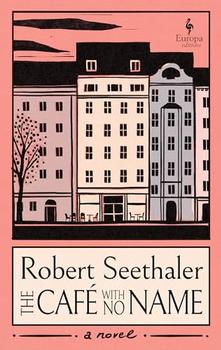Summary | Excerpt | Reviews | Beyond the Book | Read-Alikes | Genres & Themes | Author Bio

This article relates to The Café with No Name
The novel The Café with No Name is set in Vienna from 1966 to 1976. To fully immerse oneself in the atmosphere of the novel, it may be helpful to review a short history of Austria and its capital during and after the Second World War.
Austria was part of Nazi Germany from March 1938 until April 1945. When Hitler's troops entered Austria in 1938, in an event known as the Anschluss (or annexation, as Austria was now annexed into greater Germany), they received enthusiastic support from most of the population, and during the rest of the war almost one million Austrians would fight in Nazi Germany's armed forces. Other Austrians would participate in the Nazi administration. A minority of residents resisted the Nazi regime—it is estimated that approximately 100,000 Austrians actively participated in a variety of resistance groups—but after the war, according to the Austrian government's Auschwitz-Birkenau Memorial website, Austria was very quick to recast its stance as "the first victim of Hitlerite Germany to deflect guilt and strengthen its own position in the negotiations on the State Treaty. The so-called victim theory would go on to determine Austria's policy of dealing with its own history for decades." The myth that Austria was the first victim of Nazi Germany began to unravel in the mid-1980s, and in the early 1990s, the Austrian federal chancellor finally acknowledged the shared responsibility borne by Austrians for Nazi crimes.
As the war drew to an end, Soviet troops were the first of the Allies to arrive in Austria in 1945: "The Soviets had pushed the Nazis out of Austria in April 1945 and went on to pillage and loot the devastated populace." They were soon followed by other Allied troops. At the Potsdam Conference of 1945, the Allies agreed to jointly occupy Austria in the postwar period. They divided the country and the capital city of Vienna into four zones, and Soviet, American, British, and French troops controlled and patrolled those regions. They would remain in Austria until 1955, when the occupying powers would withdraw from Austria upon the completion of the Austrian State Treaty.
 Austria had been battered by the war; in Vienna 20 percent of homes had been destroyed and almost 90,000 apartments were unlivable. According to the City of Vienna's website, in the urban area "more than 3,000 bomb craters were counted, many bridges were in shambles, sewers, gas and water pipes had suffered severe damage."
Austria had been battered by the war; in Vienna 20 percent of homes had been destroyed and almost 90,000 apartments were unlivable. According to the City of Vienna's website, in the urban area "more than 3,000 bomb craters were counted, many bridges were in shambles, sewers, gas and water pipes had suffered severe damage."
The early years of Allied occupation were also difficult for Austrians. The country survived 1945 and 1946 on "a near starvation diet" with daily rations remaining below 2000 calories until the end of 1947. Natural resources and agriculture were concentrated in the Soviet Zone, complicating the process of feeding residents elsewhere. In 1950, Austria faced a severe social and economic crisis, and there were widespread labor strikes. Beginning in the early 1950s, Austria began to see economic growth, which had started with currency reform in 1947 and subsequent wage and price control agreements. In addition, Austria benefited from American aid via the Marshall Plan from 1948–1952.
According to Central European Social and Economic History, despite the economic growth of the country, the "higher living standard in Austria was paid for dearly with the health of the workers via piece work and overtime work." The wealth gap between working-class and middle-class incomes continued to widen, and the new wealth was distributed unevenly. In Vienna, housing continued to be a challenge. The city was short of "at least 200,000 flats in 1951, and of those that existed, only 14% had their own bathroom, 56% had no running water in the flat and 60% no toilet inside."
By the mid-1960s, when The Café with No Name begins, Vienna is beginning to regain its footing, but a gap persists between the city's wealthy and its working people. The novel is set in one of the city's poorer neighborhoods. Most of its characters carry memories from the war, and many have lost family members. Over the course of the ten years that the novel covers, from the day that the café opens to the day that it closes its doors for good, the country, the city, and the neighborhood slowly transform.
Ruins in Vienna after World War II, July 25, 1946, courtesy of Harry S. Truman Library and Museum
Filed under Places, Cultures & Identities
![]() This article relates to The Café with No Name.
It first ran in the February 26, 2025
issue of BookBrowse Recommends.
This article relates to The Café with No Name.
It first ran in the February 26, 2025
issue of BookBrowse Recommends.
Your guide toexceptional books
BookBrowse seeks out and recommends the best in contemporary fiction and nonfiction—books that not only engage and entertain but also deepen our understanding of ourselves and the world around us.